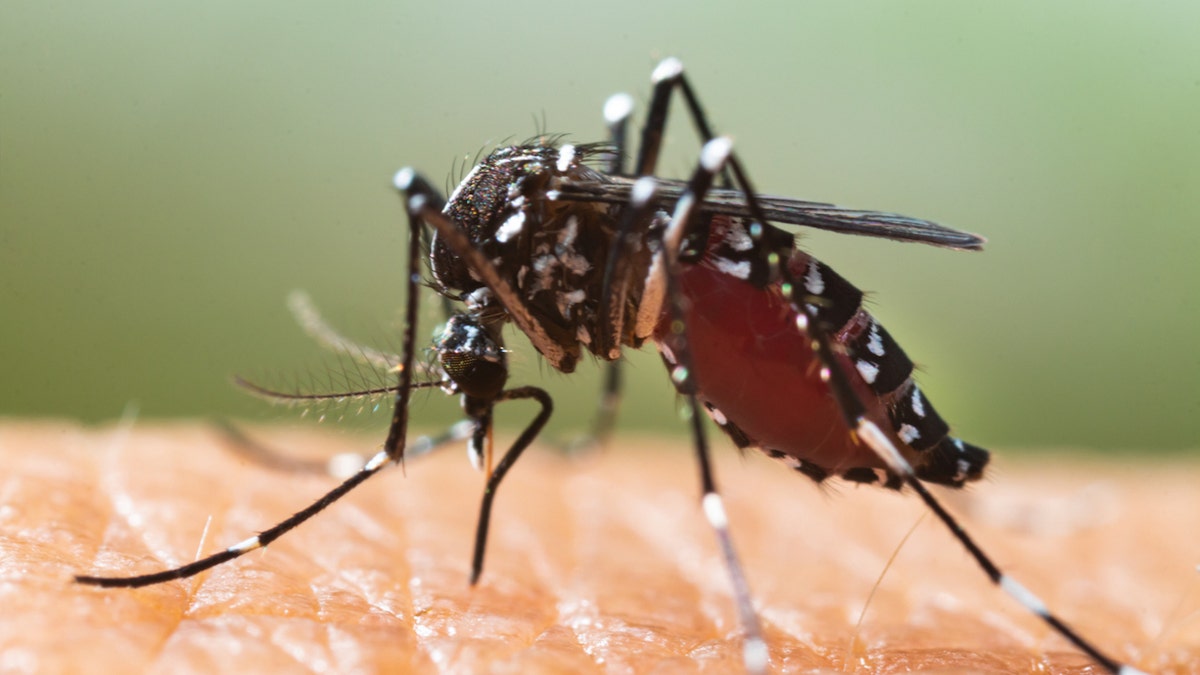Health
The Emerging Science of Tracing Smoke Back to Wildfires

As smoke from wildfires crosses state and international borders more frequently, tracking and studying it is increasingly important for shaping air quality and health measures around the world.
An upcoming study from researchers at Stanford University offers a new way to trace far-flung smoke and pollution back to individual wildfires of origin.
What’s burning in a wildfire determines what kind of pollution is in the smoke. A forest fire burns differently from a fire in a swamp, or a fire that burns buildings. As smoke travels, its chemical composition may change with time and distance.
The findings could help officials to determine which wildfires are likely to have the biggest health consequences for the greatest number of people, and to allocate firefighting resources accordingly.
“We don’t find that fire suppression resources are often spent on the fires that are most damaging from a health perspective,” said Jeff Wen, a Ph.D. candidate in Earth system science at Stanford and the study’s lead author.
Others have done similar research before, but at a much smaller scale. The new study, not yet peer reviewed, would be the first to cover the whole contiguous United States, according to the authors.
“Historically, we haven’t really been able to study those types of questions at a broad spatial, temporal scale,” Mr. Wen said.
It’s clear that wildfires have become more frequent and intense in recent years, fueled in part by climate change’s role in drying out many landscapes. Less clear to scientists has been how smoke from these fires has changed over time. The new study shows that as fires have worsened, so has their smoke: From 2016 to 2020, the U.S. population experienced double the smoke pollution that it did 10 years earlier, from 2006 to 2010. While the study focused on historical data, some of its methods can also be used to predict where smoke from a new fire will travel.
The researchers focused on a pollutant called particulate matter, made of very small solid particles floating in the air, which can enter people’s lungs and blood and lead to problems such as difficulty breathing, inflammation and damaged immune cells.
Using their new method, Mr. Wen and his team ranked all of the wildfires observed in the United States from April 2006 to December 2020 by the resulting smoke exposure. They found that the worst fire by smoke exposure during this period was the 2007 Bugaboo Fire, which burned more than 130,000 acres in and around the Okefenokee Swamp, straddling Georgia and Florida.
This initially surprised the researchers, since Western states tend to have more large fires. But the Eastern Seaboard is more densely populated, so smoke from the Bugaboo Fire didn’t have to go far to affect many millions of people. Peatlands like the Okefenokee Swamp also tend to burn slowly, Mr. Wen said, releasing more particulate matter into the air.
The worst fires in their ranking did not match up very well with the worst fires in traditional rankings, such as acres burned or buildings and infrastructure lost. More firefighting resources were not necessarily deployed to the smokiest fires, either.
“We often suppress fires mainly because of structures and immediate threat to life,” said Bonne Ford, an atmospheric scientist at Colorado State University who was not involved in this study. While it’s important to save lives and help rural communities in immediate harm’s way, it’s “short-term thinking” to focus only on those immediately dangerous fires and ignore others that may harm many people farther away through smoke exposure.
Dr. Ford and others have studied wildfire smoke patterns, as well as the resulting exposure to particulate matter pollution. But the Stanford researchers have pulled off something new by putting the two together, she said, especially over so many years and so much land area.
One aspect of the study Dr. Ford took issue with was treating all human exposure to particulate matter in smoke the same, no matter where it happened. Some people are more vulnerable to air pollution, she said, depending on their age, pre-existing health conditions, other environmental factors and whether they can take precautions such as wearing face masks outside and using air filters inside. Future research could combine Mr. Wen’s methods with existing vulnerability indexes, Dr. Ford said.
There are also more precise ways to track and predict where smoke travels, according to John Lin, an atmospheric scientist at the University of Utah who was not involved in the study. Aside from that, Dr. Lin thought the Stanford study would be very useful in figuring out the real human toll of wildfire smoke.
Smoke traveling long distances is “the new normal,” he said. This reality challenges the ways governments have historically dealt with air quality, through regulations like the Clean Air Act. Now that pollution is increasingly crossing borders, Dr. Lin said, the way that people manage air quality should evolve accordingly.

Health
Paleo and Atkins Diets: Low-Carb for Different Reasons | Woman's World

Sign Up
Create a free account to access exclusive content, play games, solve puzzles, test your pop-culture knowledge and receive special offers.
Already have an account? Login
Forgot your password?
Get back to the Sign In
Use left and right arrow keys to navigate between menu items.
Use escape to exit the menu.
Health
7 important health stories this week you simply can't miss

Every day of the week, Fox News Digital publishes a range of health and wellness pieces to keep you up-to-date on medical research, new medications, mental health trends, success stories and more.
In case you missed them, here are a few of the biggest health stories from the past week.
As always, you can see a full list of recent health pieces at http://www.foxnews/health.
CLICK HERE TO SIGN UP FOR OUR HEALTH NEWSLETTER
1. FDA tells COVID vaccine makers to update their fall shots
The U.S. Food and Drug Administration recommended that COVID vaccine manufacturers update their formulas for fall doses, in an attempt to target the KP.2 strain of the JN.1 variant.
Dr. Marc Siegel shared insights on the risks as this variant grows more prominent. Click here to get the story.
“It makes sense to target the KP.2 strain because it is becoming the predominant strain — it is surging in California and will spread across the country,” Siegel told Fox News Digital. (iStock)
2. Expert offers 7 tips to soothe sunburned skin
If not treated properly, sunburn can lead to severe skin damage and increase the risk of skin cancer, experts warn.
Angela Rosoff, a San Francisco-based wellness and beauty expert, shared some proven remedies to treat sun-damaged skin. Click here to get the story.

More than one out of every three adults experienced a sunburn last year, according to a survey by the American Academy of Dermatology. (iStock)
3. Tiger mosquitoes blamed for spread of dengue fever
As dengue fever continues to spread throughout Europe, experts are naming an invasive mosquito species as the culprit.
CANCER NEARLY TOOK HIS LEG, BUT NEW JERSEY FATHER OF 6 WALKS AGAIN: ‘I SHOULDN’T BE HERE’
Infectious diseases experts weighed in on the level of risk and share prevention tips. Click here to get the story.

Tiger mosquitoes — the species Aedes albopictus — have spread into 13 EU countries, according to an alert from the European Centre for Disease Prevention and Control. (iStock)
4. Certain exercises could reverse Alzheimer’s, expert says
In her new book, “Reversing Alzheimer’s,” Dr. Heather Sandison, a renowned expert in dementia care, offered specific recommendations for the types of exercise that can benefit patients living with the disease.
“Exercise benefits several of the root causes of neurological disease,” she wrote. Click here to get the story.

Sunburn remedies, new COVID vaccines, anti-Alzheimer’s exercises and more important stories are covered here. (iStock)
5. Experts bust sunscreen myths
Some claims on social media about sun safety have led to a major misconception that sunscreen could cause skin cancer.
Dermatologists debunk these potentially dangerous myths. Click here to get the story.

Thirty-two percent of Americans believe that a tan makes people look better and healthier, according to the Orlando Health Cancer Institute study. (iStock)
6. New Alzheimer’s drug gets thumbs-up from FDA advisory committee
Donanemab, designed to treat mild cognitive impairment and other symptoms of early Alzheimer’s disease, was endorsed by a U.S. Food and Drug Administration advisory panel.
Here’s what that could mean for patients. Click here to get the story.

Eli Lilly officials presented clinical trial results showing that the drug, donanemab, slowed cognitive and functional decline for people with mild cognitive impairment due to early stages of Alzheimer’s. (iStock)
7. FDA panel rejects MDMA-assisted therapies for PTSD
Many veterans’ hopes were dashed when an FDA advisory committee voted against the overall benefits of MDMA when used to treat PTSD.
Advocates and doctors discussed what this means for the future of psychedelic treatments. Click here to get the story.

“When I heard the verdict, all I could think about was the hopes of those veterans being dashed … and not having a solution for them,” one advocate said. (iStock)
Health
Better Than Ozempic? Doctors Say These Medications Are Better for Weight Loss Than the Popular Semaglutide

Sign Up
Create a free account to access exclusive content, play games, solve puzzles, test your pop-culture knowledge and receive special offers.
Already have an account? Login
Forgot your password?
Get back to the Sign In
Use left and right arrow keys to navigate between menu items.
Use escape to exit the menu.
-

 News1 week ago
News1 week agoIsrael used a U.S.-made bomb in a deadly U.N. school strike in Gaza
-

 World1 week ago
World1 week agoRussia-Ukraine war: List of key events, day 833
-

 Politics1 week ago
Politics1 week agoGeorge Clooney called White House to complain about Biden’s criticism of ICC and defend wife’s work: report
-

 Politics1 week ago
Politics1 week agoNewson, Dem leaders try to negotiate Prop 47 reform off California ballots, as GOP wants to let voters decide
-

 World1 week ago
World1 week ago‘Bloody policies’: Bodies of 11 refugees and migrants recovered off Libya
-

 Politics1 week ago
Politics1 week agoEmbattled Biden border order loaded with loopholes 'to drive a truck through': critics
-

 World1 week ago
World1 week agoDozens killed near Sudan’s capital as UN warns of soaring displacement
-

 Politics1 week ago
Politics1 week agoGun group vows to 'defend' Trump's concealed carry license after conviction















